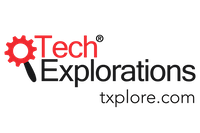Summary
In this episode, Dr. Peter Dalmaris talks with David Beamonte.
David Beamonte is a Telecommunications Engineer with a technical background in electronics and embedded software. After more than 20 years working as an embedded software developer and Engineering Manager for the electronics vendor TELNET Redes Inteligentes, specialising in fibre optic and IoT devices, David started working as a Product Manager for IoT and embedded products at Canonical, mainly focused on driving Ubuntu Core and EdgeX.
In August 2022, he joined Arduino as a Product Manager responsible for the Arduino Cloud.
Key Takeaways
- David from Arduino discusses his career and role as a product manager for the Arduino Cloud.
- The mission of the Arduino Cloud is to provide an integrated platform for developing, deploying, monitoring, and controlling connected devices.
- The platform simplifies IoT for makers and educators, with integrations with Alexa making it more appealing to beginners.
- Arduino Cloud allows users to remotely control and collect data from connected devices, with the addition of machine learning for complex tasks.
- Future developments for Arduino include a focus on education, industry, and innovation, as well as improvements to the platform for better integration with the local IDE.
Resources
- https://www.arduino.cc
- https://cloud.arduino.cc/home/
- https://docs.arduino.cc/arduino-cloud/getting-started/cloud-variables
- https://docs.edgeimpulse.com/docs/development-platforms/fully-supported-development-boards
- https://docs.edgeimpulse.com/docs/
Watch
Transcription
[spp-transcript]
This is Tech Explorations Podcast episode 16.

The Tech Explorations Podcast is a podcast produced by Tech Explorations, a leading provider of educational resources for Makers, STEM students, and teachers. Go to techexplorations.com to see a complete list of our books and courses covering the Arduino, Raspberry Pi, and electronics.
